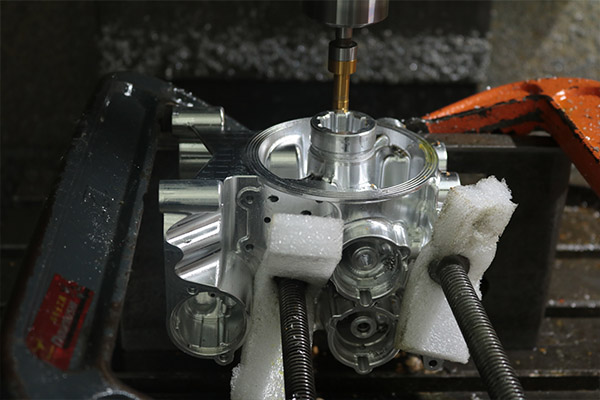Get in touch.
Dear,I will reply in 12 hours. All your message are protected!
Rapid Prototyping Services, Professional manufacturer of CNC Prototyping and 3D Prototyping in China.
CNC (Computer Numerical Control) machining is a widely used manufacturing process for producing high-quality enclosures. These enclosures are crucial for protecting electronic components and ensuring the functionality and aesthetics of various products. In this article, we will explore the techniques and best practices for CNC machining enclosures, allowing you to achieve precise and efficient results.

1.Material Selection:
Selecting the appropriate material is essential for CNC machining enclosures. Consider factors such as durability, heat resistance, electrical conductivity, and aesthetic appearance. Common materials used for enclosures include aluminum, stainless steel, ABS plastic, and acrylic. Choose a material that meets the specific requirements of your application.
2.Design Considerations:
Before starting the CNC machining process, carefully consider the design of the enclosure. Ensure that the design allows for proper placement and protection of components, easy assembly, and efficient heat dissipation. Incorporate features such as slots, holes, or vents to accommodate wiring, connectors, and ventilation.
3.CAD/CAM Software:
Utilize advanced CAD (Computer-Aided Design) and CAM (Computer-Aided Manufacturing) software to design and program the enclosure. These software tools offer specialized features for creating precise 3D models, generating toolpaths, and simulating the machining process. Ensure that your software supports CNC machining and provides accurate machining simulations.
4.Machining Techniques:
Implement appropriate machining techniques for manufacturing enclosures. CNC milling is commonly used for contouring the external shape and creating pockets or holes. CNC drilling is used for creating mounting holes, slots, or openings for connectors. Consider using 3-axis or 5-axis machining depending on the complexity of the enclosure design.
5.Tool Selection:
Select cutting tools specifically designed for machining the chosen material. Choose end mills, drills, or specialized cutters suitable for aluminum, stainless steel, or plastics. Consider the tool geometry, coatings, and cutting parameters to achieve optimal cutting performance and surface finish. Regularly inspect and replace worn-out tools to maintain machining accuracy.
6.Surface Finishing:
Consider the desired surface finish of the enclosure. Depending on the material and aesthetic requirements, options include leaving the machined surface as-is, applying a brushed or polished finish, or adding coatings such as anodizing or powder coating. Plan for any necessary post-machining processes to achieve the desired appearance and functionality.
7.Quality Control:
Implement a comprehensive quality control process to ensure the accuracy and integrity of the machined enclosures. Use precision measuring instruments such as calipers, micrometers, or coordinate measuring machines (CMMs) to verify critical dimensions and tolerances. Conduct visual inspections to check for surface finish and cosmetic defects. Implement statistical process control (SPC) techniques to monitor and analyze variations in the machining process, allowing for continuous improvement.
Conclusion:
CNC machining offers precise and efficient manufacturing of enclosures. By considering factors such as material selection, design considerations, utilizing CAD/CAM software, implementing appropriate machining techniques, selecting suitable cutting tools, planning for surface finishing, and implementing rigorous quality control, you can achieve high-quality enclosures that meet the requirements of your specific application.
© 2005-2025 Shenzhen Tuowei Model Technologies Co., Ltd. | All Rights Reserved 粤ICP备11096697号